Mind wandering on command
- PMID: 39301008
- PMCID: PMC11412258
- DOI: 10.3389/fpsyg.2024.1448226
Mind wandering on command
Abstract
Three experiments (N = 336) examined whether participants can systematically adjust levels of mind wandering on command. Participants performed four blocks of the metronome response task (MRT) in which they pressed a spacebar in sync with a steady audio tone. Levels of spontaneous and deliberate mind wandering were measured using intermittent thought probes. Performance was indexed with MRT response time variability and omission errors. Each block started with instructions to mind wander either 20, 40, 60, or 80% of the time. Analysis was primarily conducted using linear mixed effects models. We found that mind wandering (spontaneous and deliberate), response time variability, and omission errors increased progressively with instructions to mind wander more and that these instruction-related changes were larger for deliberate than spontaneous mind wandering (Experiments 1-3). This pattern held regardless of whether participants' eyes were open or shut (Experiment 2). Relative to a control group receiving no commands to mind wander, instructing people to mind wander 60 or 80% of the time led to more deliberate mind wandering, and strikingly, asking people to mind wander 20% of the time led to less spontaneous mind wandering (Experiment 3). Our results suggest that individuals can titrate mind wandering experiences to roughly match instructed levels indicating that mind wandering can be manipulated through simple instructions. However, other features of the data suggest that such titration is effortful and may come with a cost to performance.
Keywords: attention; executive control; experience sampling; mind-wandering; sustained attention; thought control.
Copyright © 2024 Safati, Carr, Lowe and Smilek.
Conflict of interest statement
The authors declare that the research was conducted in the absence of any commercial or financial relationships that could be construed as a potential conflict of interest.
Figures



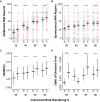
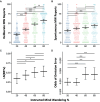
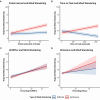

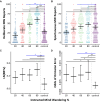
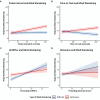
References
-
- Bates D., Mächler M., Bolker B., Walker S. (2015). Fitting linear mixed-effects models using lme4. J. Stat. Softw. 67, 1–48. doi: 10.18637/jss.v067.i01 - DOI
LinkOut - more resources
Full Text Sources

